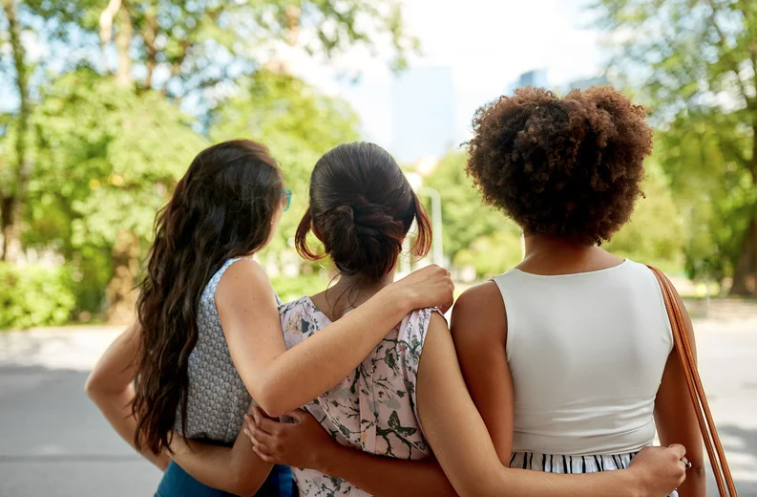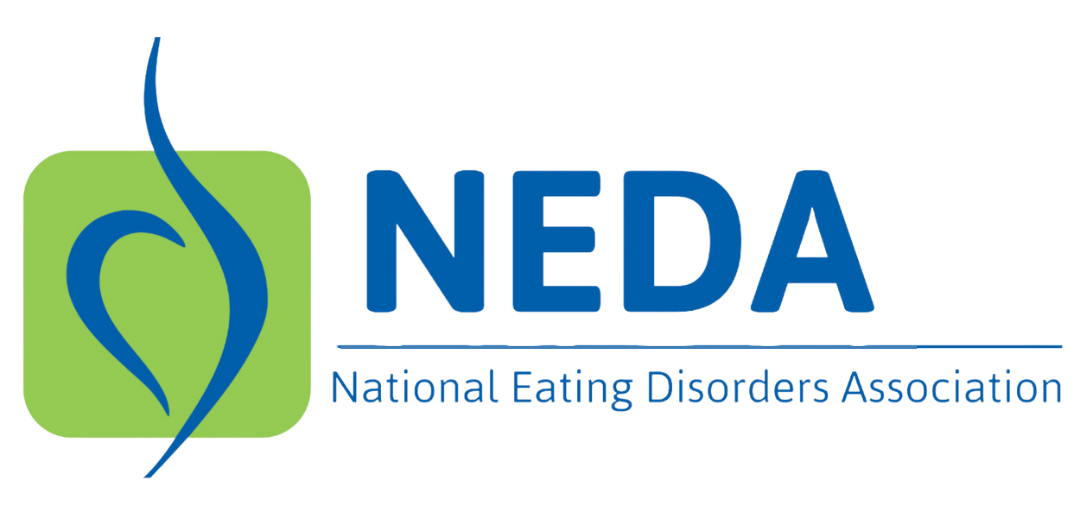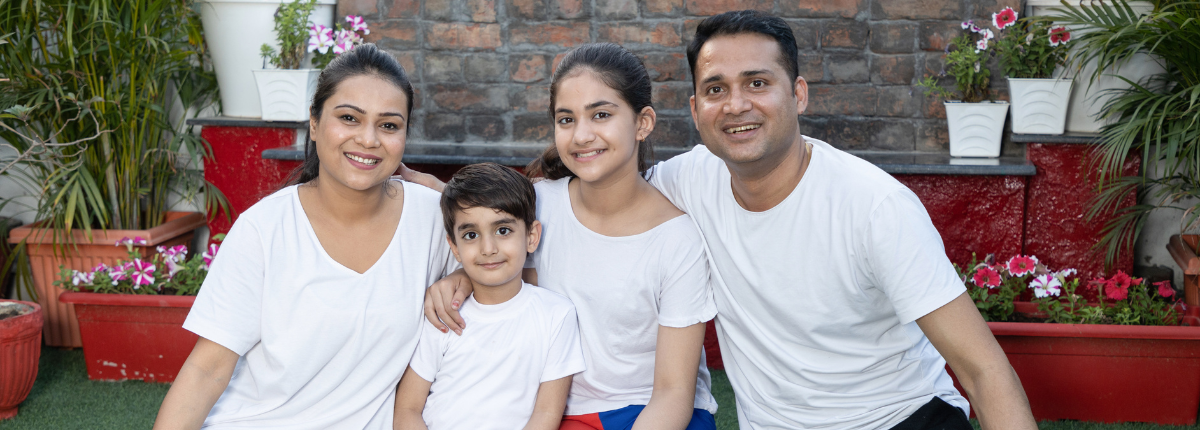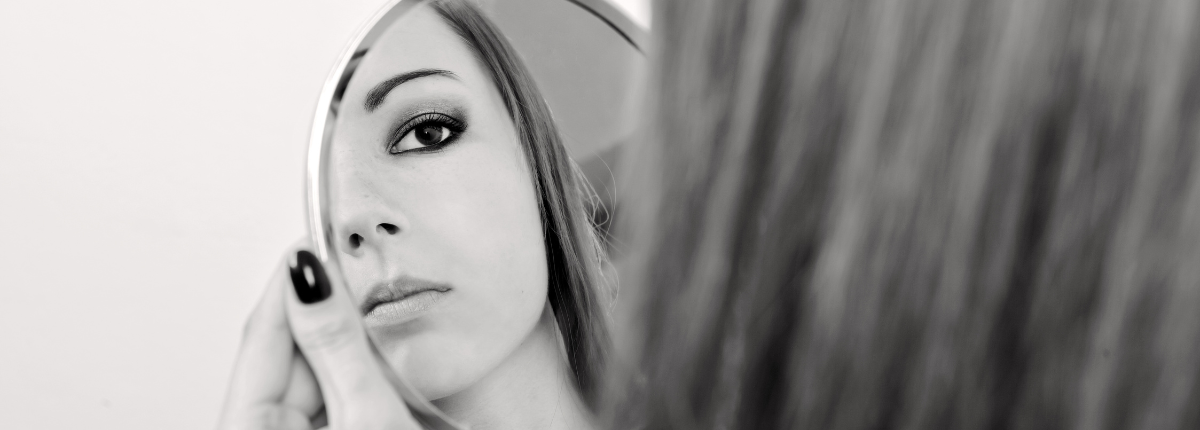This blog post represents the author’s views and should not be interpreted as professional/medical advice or endorsed by NEDA.
When I was growing up, I had no idea what an eating disorder was. My family didn’t either. Me and my family were extremely focused on school, holidays, and everyday life, far from the medical terms and the complexities that would eventually define my world.
At the age of 12, I was diagnosed with an eating disorder. It started as a regular doctor’s visit for a slight headache. It was supposed to be a quick check up, the kind you have when you feel a little tired and just want to make sure everything is okay.
Suddenly, I was lying on a bed getting an EKG. Sticky patches called electrodes were placed around my heart, wires connecting them to a heart monitor. The slow beep of my heart echoed through the room: 30 beats per minute. For context, a normal resting heart rate is 60-100 bpm. I didn’t realize how serious that was. Then, I heard the words: You have anorexia nervosa.
My first thought was that they were joking. Sure, I had started tracking calories in every meal. Sure, I stood all day and avoided sitting. Sure, I loved running because it burned calories. But I thought it was normal, just a way to lose a little weight. I didn’t think it was serious enough to be diagnosed.
My dad, being a helicopter parent, immediately started researching. He called relatives, looked up hospitals, and tried to understand what had gone wrong. The doctor recommended hospitalization. Before my diagnosis, my biggest concern was passing a history test. After, it was whether I’d faint in the middle of school or miss weeks of classes to stay in the hospital and eat.

The Hospital Experience
The day after my diagnosis, my family admitted me to the hospital. I was terrified, imagining weeks of isolation and forced meals. Instead, it was a different experience entirely.
I was given a spacious room with a bed, a couch, and a small TV. The bathroom had a tiny mirror. But my favorite part of the hospital was the art room. At first, I loved it simply because it provided me a way to get out of my hospital room. It was filled with every kind of art supply you could imagine. After eating meals that felt overwhelming, art became therapeutic, a way to distract myself.
The hospital had strict rules. You had to finish every meal, or you’d be given a supplement called Equip, a nutrient dense drink. If you left any food, you’d drink Equip to make up for it. I remember once leaving a single drop of milk and having to drink half a bottle of Equip.
You also had to remain seated unless walking was explicitly allowed. Bathroom breaks were supervised, you had to leave the door slightly open and couldn’t go right after meals. These rules were frustrating, but they were meant to keep us safe.
The food was a surprise. Coming from an Indian family, I was used to meals like roti and sabzi. At the hospital, I ate hamburgers, mac and cheese, and other Western dishes. Although the calories scared me, it tasted good.

Finding Connection
The hospital wasn’t just about rules and food. It was also about connection. I bonded with other patients in the art room and during meals. Most of them were older than me, and their stories fascinated me. At the time, I didn’t have a phone, so these conversations were my main way of staying connected to others. Despite our struggles, we found ways to laugh and share moments of joy.
Back home, my friends were incredibly supportive. They sent me cards and gifts, and I cherished them. They messaged me on gmail and sent encouraging texts. After weeks at the hospital, I longed to return to my friends.
Relapse and Relocation
Despite treatment, I kept relapsing. My family decided to move to San Diego for better care. I didn’t know we were going to San Diego at first because my parents knew I would never agree. Right after I was discharged from yet another visit at the hospital, my parents told me we were going to Disney Land in Los Angeles.
Looking back, I don’t know how I believed them. It took 7 hours to get there. My mom told me to check into a hospital to make sure everything was okay before we went to “Disney Land” and it wasn’t. I was suddenly forced to stay at yet another hospital in a different city.
Right after I was discharged, we moved to an AirBnB for four months in San Diego. Every morning, I went to a treatment center where I ate breakfast and lunch, attended therapy, and participated in educational classes about eating disorders. I returned home around 5 PM each day.
The treatment center in San Diego was different. We had personal therapists who worked with us weekly. They monitored us when we ate food, but we were able to eat it with everyone. They talked with us while we ate. Sometimes they even played trending shows.
It was here that I started to genuinely understand my disorder and work toward recovery. I met so many different types of people.
I missed nearly an entire semester of school during this time. At first, I tried to keep up with assignments by submitting the work online. It was extremely challenging as I had to email my teachers constantly and give them my homework assignments.
Eventually, the school decided not to record my grades for the semester. So I started doing homework assigned by a teacher at the treatment center. Letting go of my academic perfectionism was hard, but it was necessary for my recovery.
San Diego was also such a beautiful place and I was so lucky to have lived there for the amount of time I did. We lived right near a beach and I would go there nearly every day. The sunsets were beautiful and the water felt so nice to swim in.
Additionally, nearly everyone had a dog, and I loved dogs. I used to run up to them and pet them. Dogs also helped me as therapy as I recovered. My parents even promised me we would get a dog eventually (I still don’t believe them).

Steps Toward Recovery
San Diego became the turning point in my journey. I formed deeper connections with people who truly understood what I was going through. We shared experiences, supported each other, and celebrated small victories. Recovery wasn’t linear, but being surrounded by others with similar struggles made it feel less lonely.
I also began to rebuild my relationship with food. The meals I ate: breakfast, lunch, and dinner, they all became less about fear and more about nourishment. Therapy sessions helped me understand the issues that grew my eating disorder and made me feel so afraid of food. Slowly, I started to heal.
A New Chapter
Returning home after months of treatment was bittersweet. I was stronger but still faced challenges. Recovery is an ongoing process. Some days are harder than others, but I’ve learned to lean on my support system and embrace the progress I’ve made.
My diagnosis at 12 changed my life. It forced me to confront struggles I didn’t fully understand at the time. But it also taught me resilience, the importance of seeking help, and the power of community.
Conclusion
Sharing my story isn’t easy, but I hope it helps others feel less alone. Eating disorders are often misunderstood, especially in communities where mental health isn’t openly discussed. By speaking out, I want to break the stigma and encourage others to seek help if they need it.
Recovery is possible. It’s not a straight path, and it takes time, but every step forward is worth it. Today, I’m grateful for the lessons I’ve learned and the people who have supported me along the way. Life after diagnosis is still life, full of growth, hope, and possibility.
Resources
Are you concerned you might be struggling with an eating disorder? Take our confidential screening tool.
Are you looking for an eating disorder treatment provider? Find treatment in your area or online.
Are financial barriers preventing you from seeking the support you need? Learn more about free and low cost support options to connect with others and provide tools to promote recovery.
Aashna Gupta is a passionate freshman writer who wants to raise awareness about eating disorders and share her story with the world. She hopes to become a doctor in the future.




